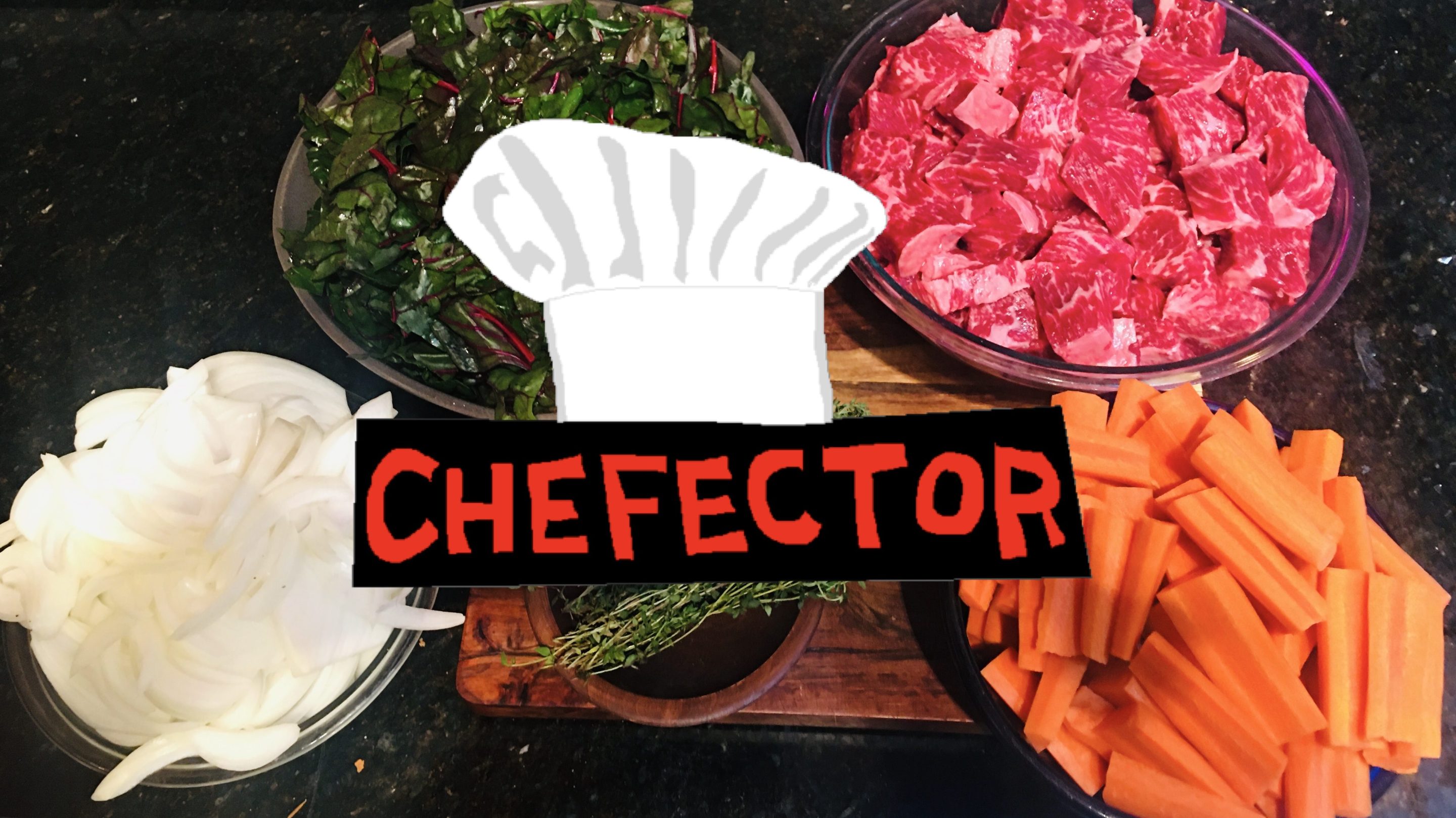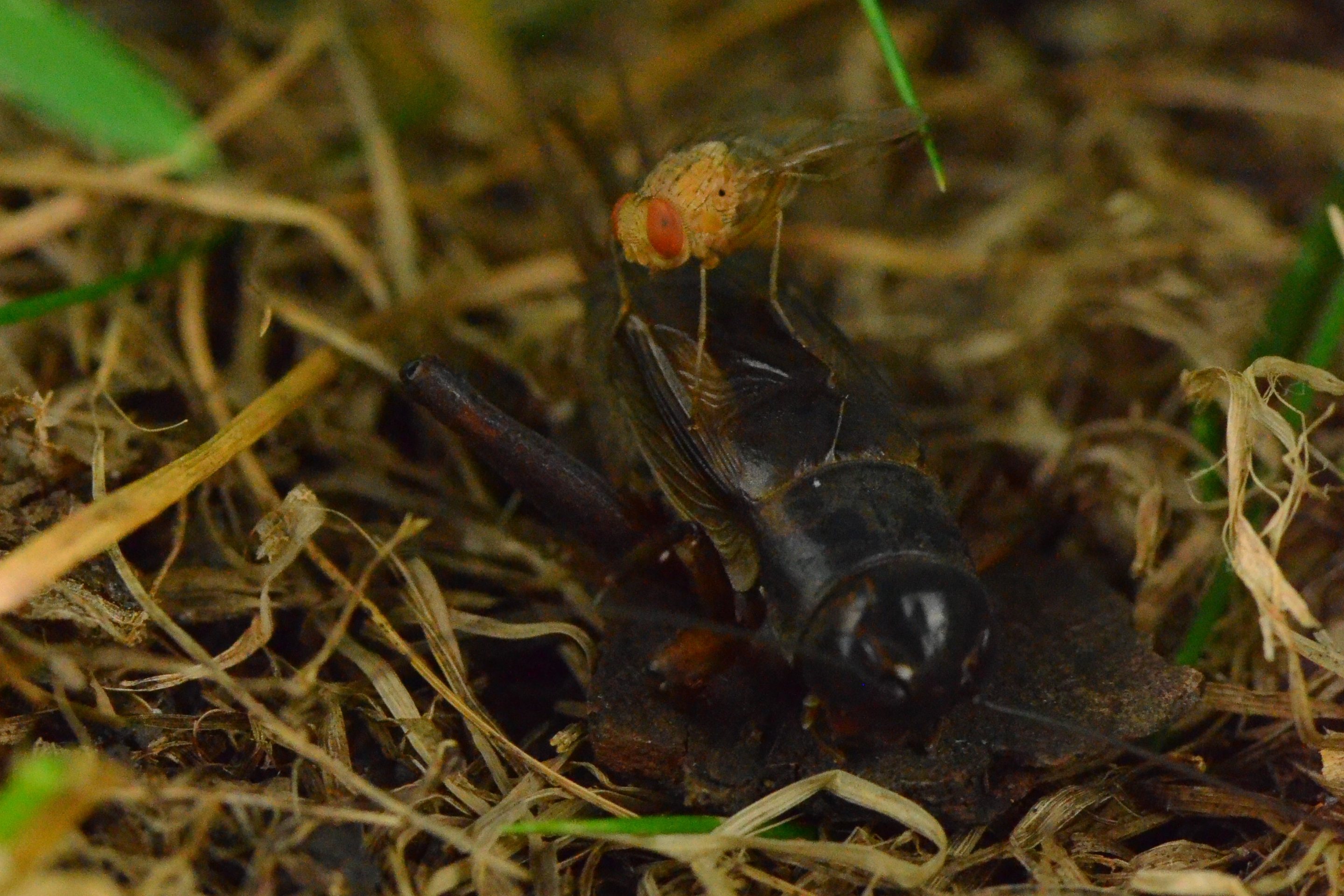Let’s Cook Some Beef Stew, (One Of) The Right Way(s)
10:01 AM EDT on October 3, 2020

I do not want to be like There is no wrong way to make beef stew, even though that was my first impulse. Some dingus will email me a photo of the burning wreckage of his home and be like "You did this, youuuuuu diiiiiid thiiiiisssssssss," and he will sue Defector dot com because of my misleading beef stew proclamations. Instead I will say that there are so many right ways to make beef stew, and I will add that none of them are the ways that include a call to the fire department. If it comes out hearty and rich and satisfying, if you do not have to gnaw at big tough chunks of meat, if it, unlike just about everything else, does not fill you with dread or grief but rather makes you feel warm and satisfied, then it is right.
All of which is to say, if the following instructions for beef stew do not comport with how you like to make it, get off of my case.
It's a good stew season right now. Stew-type vegetables (carrots, onions) are all huge and good-looking at the grocery store. The weather is nippy but not yet hellish; it's possible to welcome the cold as an old friend rather than curse it as a hated foe the way you will in another couple of months. Your tastes, if you are like me, have turned toward heavier, more comforting foods. Also you still can't really go anywhere, so you may as well stay home and braise some beef for a long time and try to strike up a conversation with the pot to keep yourself company. Let's make some beef stew.
Here are some things that you will need.
You will need some dang beef. Maybe like a couple pounds of it? Here I am talking about an actual cut of beef, not ground beef. A big ol' fatty chuck roast would be great and is the classic cut for beef stew. Top round is probably fine, or anyway it's fairly ordinary for top round to receive the kind of slow, wet cooking treatment you'll be deploying today, and it's likely cheaper per pound than chuck, but it's awfully lean and not super duper flavorful and I'm not all that into it, if you particularly care about my opinion on the matter. If you can get them and they're comfortably priced, beef short ribs with the bones removed (or, alternatively, "boneless short ribs," which, depending on where you're getting them, may or may not be a slightly different cut of beef from the kind that come with the bones in them) will be absolutely wonderful. I do not recommend flank or brisket; I do not recommend the kind of steak cuts (ribeye, filet, etc.) you'd typically sear and serve medium-rare; I feel this ought to be intuitively obvious but just in case, I do not recommend "all-beef hot dogs."
Whatever kind of beef you have, cut it into chunks; I recommend nice hearty-sized cubes, maybe like an inch-and-a-half on a side? I have never measured a cube of beef in my life. I like a nice big chunk of beef on my frickin' fork. My sense is that if you're going with a lean cut like top round, you might consider erring on the side of slightly smaller cubes, lest chewing these suckers start to feel like work. Maybe that's wrong! I see it as an argument for going with chuck roast or short rib, so that you can have big honking hunks of beef in your stew.
Once you have your beef hunks, salt them very generously and set them aside (maybe in the fridge?) while you handle the vegetation. This will give the salt time to work its way into the beef. When you are done with the vegetation, come back to your beef cubes and toss them with just a little bit of flour to give them a light coating, so that they look like ghosts of themselves.
In the meantime, you will also need vegetable-type stuff. Here is where I could give you an array of choices of vegetation for your stew and then be like "Go wild! Suit yourself! It's your food, and I don't give a damn!" like I just did with the beef. But frankly I do not want to! This is my chance to advance my personal favorite beef stew, and by God that is what the hell is happening right now. So. Slice one or two big yellow onions into thick strips, cutting from stem end to root end, with their fiber, French-style, rather than across it. I like some big chunks of carrot in a stew; they taste good and are satisfying to eat and they make me think of the good word "rustic." Therefore peel some very large carrots and cut them into finger-sized pieces. Your pile of carrot pieces should be roughly the same size as your mound of meat cubes. How many carrots is that? Who the hell knows!
And now—yes, goddammit, yes—remove the stalks and the thickest ribs from a big bunch of red chard, then rinse and slice the leaves into, oh, whatever, maybe vaguely spinach-leaf-sized pieces. Wait a minute, you are shrieking, wait just a damn minute—you mentioned chard in the frittata blog, too. Does Defector have a chard agenda???? The answer is yes. Defector has a chard agenda. Chard is the perfect leafy vegetable for this: It wilts when you so much as look sideways at it, tastes great, and, especially in the case of the red kind, looks pretty, even when added to otherwise not particularly lovely food preparations. And, my friends, it is spectacular in beef stew. By the time you are midway through a bowl of this stuff, you will be hunting for the chard.
If you can't get chard, you can use beet greens or spinach for this without having to change the steps very much. You can probably use escarole, for that matter, though I think escarole wilts to a color that is not super appealing in a bowl of brown stew. If you want to try kale, that is your business—kale is fine!—but this will change the cooking process quite a bit. Ditto for collard greens or turnip greens.
Chard and the like wilt extremely quickly; you can add them to your stew at the absolute end of the process, even after you've turned the heat off on your stove, and they'll still be silky and fully wilted by the time you sit down to eat. If you have any finicky cringing eaters in your party, first of all why, but also, you can leave the chard out of the pot altogether, stir some chopped chard into your individual bowl of stew, and still enjoy some insanely good stewed greens in your beef stew. Kale, by contrast, takes real cooking; collard greens will stand up to whole entire hours of gentle braising before they fully relax. If that's how you want to do it, go with God! The point here is that stewed greens are an extremely good addition to your beef stew; I want you to include them even if you want to be stubborn about which particular ones to go with. Personally I think you should go for chard, and we are going to proceed from this point as though you have gone with chard. Maybe you could just fucking cooperate this one time.
Many stew recipes call for potato, and for good reason. That reason is that potatoes rule. If you want to peel some waxy potatoes (red or Yukon gold are good for this) and cut them into nice big hunks, that will be great. On the other hand you may have noticed that neither the previous sentence nor the word "potatoes" were boldfaced. You may have intuited that this is because I am about to recommend some psycho shit. Well you are wrong (and also quite rude), because I am actually about to recommend some extremely good shit! What I am about to recommend is that you swap out the potato for a pound of (either store-bought or homemade but LOL let's be realistic here, we're talking about store-bought) potato gnocchi!!!!!
I'm extremely excited for you to do this. Both so that you can feel bitter shame for your earlier rudeness and for the much more important reason that, my friend, it is the absolute best thing. I will not insult your family by telling you that you will never love anything in your life as much as you will love your first encounter with a pillowy gnocco in a mouthful of heavy and rich beef stew, but that is only because of the possibility that they are reading this. (Frankly, just between you and me, they are nothing compared to gnocchi.)
You will also need: beef stock, some more all-purpose flour, fresh herbs (preferably thyme, rosemary, and a couple of bay leaves), canned or jarred anchovies, a small amount of sturdy cooking oil, and salt and pepper. That's it! That's all you need. Many extremely delicious stew recipes call for wine or beer or whatever, or for balsamic or malt vinegar, or for tomato paste, or for any of a number of other ingredients, but this is not those, and those can go to hell.
Now. Heat up your biggest, heaviest pot. When it is very hot, add a tablespoon or so of that cooking oil, give the oil a few moments to get all shimmery and hot, and now brown the shit out of your cubes of beef in it. Work in batches, so that each cube has some space to itself; this will allow them to brown rather than to grey, which is not really a word you ever want to use as a verb unless you are describing hair. Use tongs to flip the cubes after, oh, a couple of minutes per side; remove the cubes to a big bowl when they're done. This is the most tedious part of the stew-making process, by far. It likely will fill your kitchen with smoke. It sucks! I don't have anything else to say about it. It sucks.
Eventually all your cubes of beef will be nice and brown and hanging out in a bowl together, and you will be absolutely sick of this shit. Buddy, I am right there with you. There are two ways you can proceed, here. Either you can continue working in batches, blasting some attractive brown caramelization into your onions and carrots a fistful at a time, salting them as they cook and then removing them into yet more bowls, or you can skip that. I will not judge you for skipping it. On the other hand, doing it will add sweetness and depth of flavor to the finished product. Only you can decide whether you care about that, having just spent about an hour fiddling around with hunks of beef.
Whether you go through with that step or not, eventually you will have an empty pot with probably some amount of fat sizzling away down in it. Things will start happening more quickly now. Lower the heat a bit, and chuck your anchovy fillets into this fat. How many anchovy fillets? That depends on your courage. I recommend A Lot: more than six for sure, probably fewer than a whole jar. Move them around with your cooking implement of choice. They will dissolve in moments. Now dump your onions into the pot and toss them around to coat them with the anchovy and fat. (Hold the carrots out for now. It's fine if the onion all but fully dissolves over the next couple of hours—it's fine with me, anyway, and that's what matters—but you will not want to overcook the carrots into mushiness.)
Now add, oh, I dunno, maybe a quarter-cup of flour? Toss things around with your implement for a minute. Does the flour seem to have comfortably absorbed all the liquid fat in there? Then it was probably enough. You've made a roux of the flour and the liquid fat; this will thicken your stew, and enables the flour to act as a medium between the fat and the beef stock you're about to add, so that you don't end up with a layer of liquid fat at the top of your stew, but do end up with a rich stew thanks to the fact that it still has all that delicious fat in it.
Now, dump the cubed beef back into the pot, and pour your beef stock over all of this stuff and give it some gentle stirs. Taste the broth and add salt as needed; also crack a bunch of black pepper into there because it's good. Raise the heat on your stove, bring your nascent stew up to a burble, and then lower the heat to keep it at a low simmer. Set a timer for two hours, and go find something to do. It's October; watch a spooky movie. I recommend House on Haunted Hill (1959), an extremely goofy horror movie featuring a delightful Vincent Price performance and one of the most hilarious climaxes in any film. It's about a group of imbeciles behaving extremely stupidly while trapped inside of a place they can't leave, which also happens to be what every day of American history has been like for the past seven months.
So, two hours have passed; your kitchen smells incredible and it's all you can do not to gnaw on the corner of your pot. Take the lid off, control yourself for Pete's sake you'll destroy your poor teeth, and add the carrots to the stew. Also, while you've got the lid off, tie up some thyme sprigs, a rosemary sprig, and a couple of bay leaves into a bundle with some kitchen twine and chuck that sucker in there; if you happen to leave yourself enough twine, you can tie the end of it to the handle of your pot to make it easier to extract at the end. Give the pot a big slow stir or two, stick the lid back on, and set another timer, this time for just an hour. There is no time to watch another spooky movie. I suggest carving gibberish into the walls of your home.
There's that timer again. You're very nearly done. Retrieve the bundle of herbs and discard it. Dump the gnocchi in there and stir them in. They'll need just two or three minutes in the stew to cook to perfect softness. After one of those minutes, begin stirring the chard leaves in, a fistful at a time if you're short on space.
Taste one of the gnocchi. Is it heaven? Then your stew is done. Ladle it into bowls. If you happen to have some fresh parsley, that'll do nicely chopped and scattered across each serving, but it's not necessary.
Serve your stew with warm crusty bread if you like, torn roughly into hunks for dredging through it; if you are feeling particularly monstrous and decadent, you may butter this bread. I'll look away while you make up your mind.
Dig in. The beef is tender; you can break it apart with your tongue against the roof of your mouth. The hunks of carrot are soft and sweetened by cooking, but not mushy; they resist your bite ever so slightly. The gnocchi, as we've discussed, are heaven; the chard leaves—the frickin' greens!—are silky and somehow indulgent, even in a bowl otherwise largely filled with braised beef and what's essentially gravy. The colors are rich and autumnal. The sensations are good. You did it right.
If you liked this blog, please share it! Your referrals help Defector reach new readers, and those new readers always get a few free blogs before encountering our paywall.
Assignment Editor
Stay in touch
Sign up for our free newsletter




